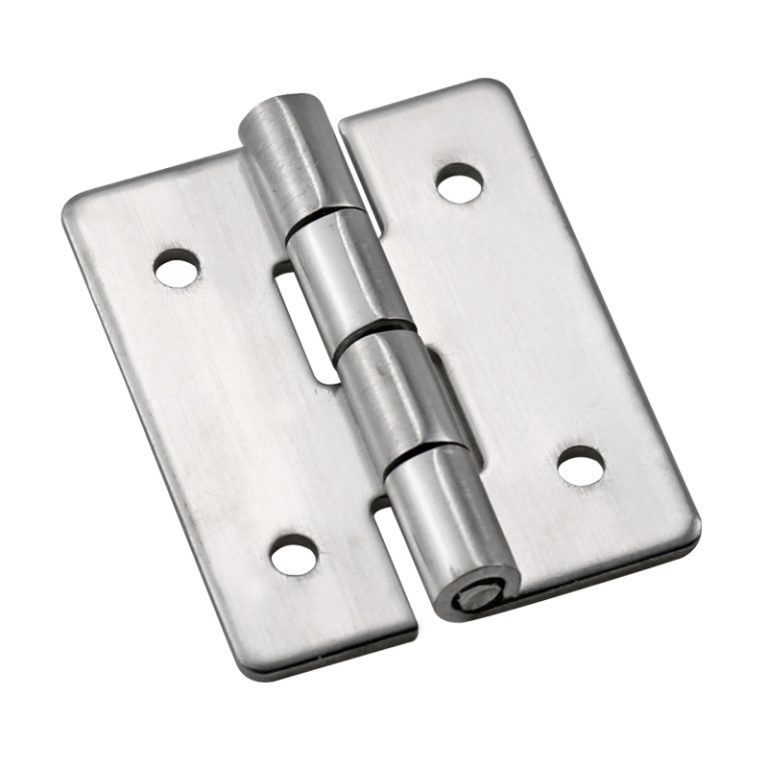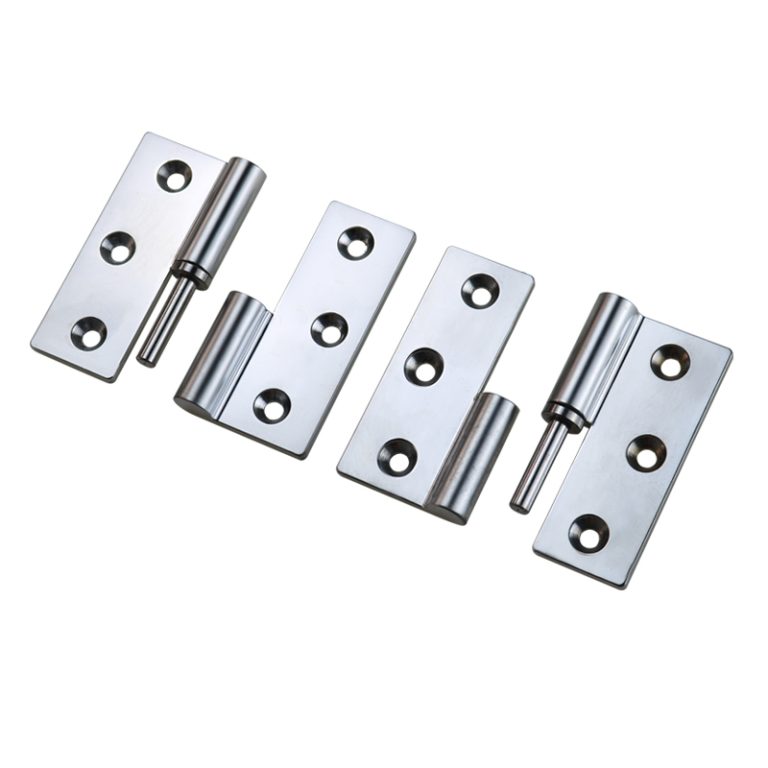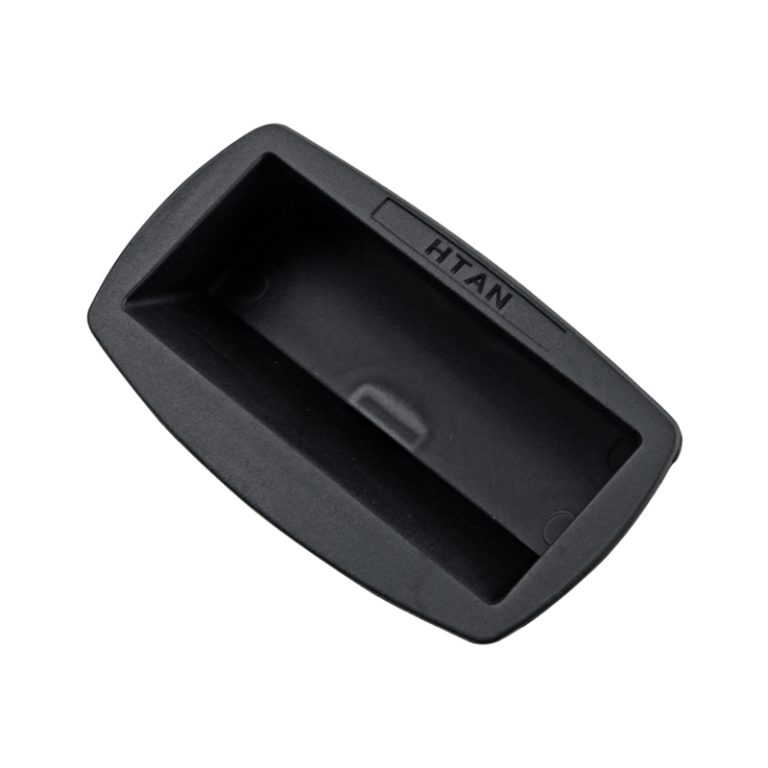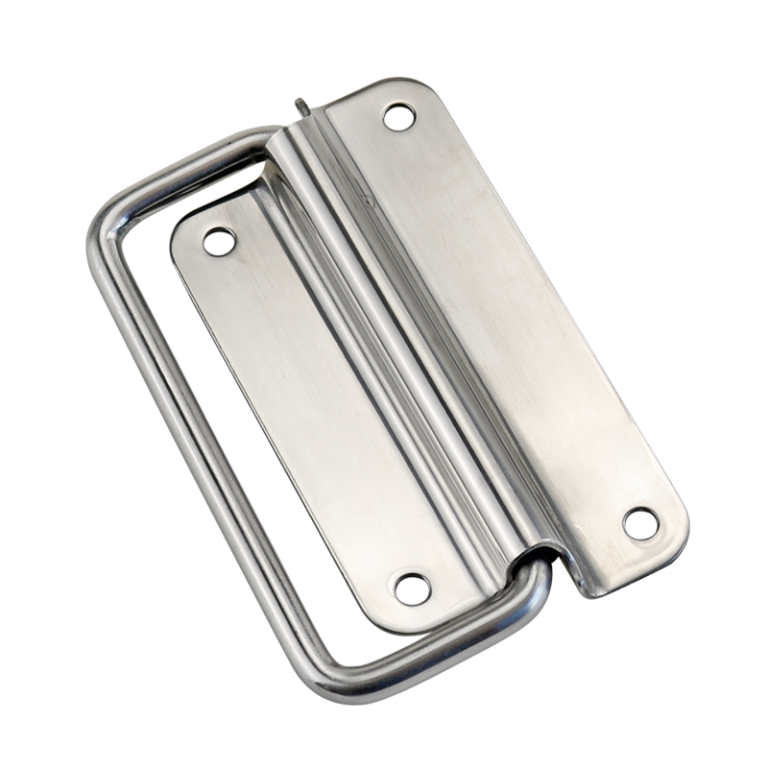HTAN is one of the leading manufacturers of industrial hinges, handles and latches in China.
-
+86 13720060320
-
julius@haitangs.com

Detachable Hinges vs. Traditional Hinges: Differences and Applications
Hinges serve as essential connecting and supporting mechanisms for movable components like doors, windows, cabinet doors, and equipment covers, playing a critical role in both household furniture and industrial equipment.
While traditional hinges have a long history and a simple structure—typically using a pin to fix two leaf plates—they suffer from drawbacks like difficult disassembly and maintenance challenges. In recent years, detachable hinges have gained significant attention due to their “tool-free, quick installation and removal” feature.
This article comprehensively outlines the differences between detachable and traditional hinges, covering definitions, structural principles, performance comparisons, and application scenarios. It aims to provide readers with a systematic reference for selection and decision-making.
Definitions and Classifications

Traditional Hinges
Traditional hinges typically consist of two symmetrical leaf plates connected by a central pin. Common examples include:
- Butt hinges
- Barrel hinges
- Continuous/piano hinges
These hinges are not designed for easy disassembly; removing them usually requires unscrewing or driving out the pin, leading to time-consuming maintenance.

Detachable Hinges
Detachable hinges (also called take-apart or lift-off hinges) are designed for quick separation. Types include:
- Lift-off Hinges
- Slide-on Hinges
- Quick-release Pin Hinges
- Tool-less Cam Hinges
They may also be classified by detachment ease: manual, semi-automatic, or tool-required.
Note: Detent Hinges, which hold positions at angles, are not detachable hinges—they serve a different purpose.
Structure and Working Principle
Traditional Hinge Structure
- Two leaves + central pin
- Pin bears shear and axial forces
- Can fail due to pin bending/shearing
Detachable Hinge Structure
- Incorporates separation points and locking features
- Types of mechanisms: spring-loaded balls, cams, magnets, sliders
- Often includes floating pins or elastic bushings for alignment
Illustration Suggestion: Diagram showing frame-mounted block + door-mounted leaf with detachable pin
Mechanical Comparison
- Traditional Hinges: Fixed pivot; higher stress on pin
- Detachable Hinges: Stress distributed across pin and locking mechanism; better stress management
Failure Modes
- Traditional: Pin or knuckle wear
- Detachable: Latch/spring fatigue, accidental disengagement
Installation and Removal Process
Traditional Hinges
- Requires screws
- Realignment after each disassembly
- Risk of screw hole wear
Detachable Hinges
Typical 3-Step Process:
- Unlock mechanism (cam, button, lever)
- Lift or slide to disengage
- Remove door/panel
Types:
- Tool-Free (push buttons, spring balls)
- Tool-Required (hex keys, cam locks)
Repeatability: ±0.2 mm alignment typical
Time Cost Comparison
- Traditional: Minutes per removal/reinstall
- Detachable: ~30 seconds per cycle
- Significant cumulative time savings
Performance Comparison
Load Capacity
- Measured to ANSI/BHMA standards
- Detachable may have slightly lower peak loads
- Some rated for 300–600N; fatigue life: 100k–200k+ cycles
Precision
- Detachable hinges retain alignment better over time
- Traditional hinges can shift after repeated unscrewing
Durability
- Salt spray tests: EN1670 Class 2–5
- Material: Stainless steel > zinc > standard steel
Safety
- Secure latching to avoid accidental release
- Anti-pinch features in high-safety applications
Maintenance
- Detachable: easier servicing (grease ports, replaceable bushings)
- Traditional: more difficult and time-consuming
Cost and Supply Chain
Unit Cost
- Traditional: lower (zinc/steel, mature processes)
- Detachable: higher (precision, stainless/aluminum, more components)
Lifecycle Cost
- Detachable hinges reduce labor/downtime
- Pay off over time in maintenance-heavy environments
Supply Chain
- Traditional: standardized, widely available
- Detachable: more specialized; may require OEM orders
Volume Economics
- At scale, detachable hinge costs drop significantly
- Economical for bulk applications
Typical Applications
Residential
- Kitchen wall cabinets
- Bathroom mirror doors
- Closets and furniture (e.g., IKEA snap-in systems)
Commercial
- Trade booths, coolers, hotel dividers
- Display cases—easy cleaning/service
Industrial

- Server Racks: Tool-free access via lift-off hinges
- Medical Carts: Hinges allow autoclaving/removal
- Aerospace: Quick-detach for rapid service
- Harsh Environments: Stainless hinges with salt spray resistance
User Experience & Case Studies
- IKEA Sektion: Plug-in concealed hinges save alignment time
- Tesla Model Y: Lift-off frunk hinges reduce repair time
- Hospital ICU: Hinges with antimicrobial coating support hygiene
- Gym Locker Incident: Spring-latch failure underscores need for secondary safety features
Future Trends & Innovation
- Materials: 3D-printed titanium, carbon fiber
- Smart Hinges: IoT sensors, remote status monitoring
- Modular Design: Hinges with built-in lighting or sensors
- Sustainability: Disassembly supports recycling and circular economy
Selection & Decision Guide
Three-Step Selection:
- Define Application
- Assess Removal Needs
- Balance Budget vs. Lifecycle Cost
Key Evaluation Parameters:
- Load/cycle ratings
- Disengagement force
- Positioning accuracy
- Certification (ANSI, DIN, EN)
- Safety/latch integrity
- Opening angle
- Closure type
Brands & Pricing:
- Furniture: Blum, Grass, Häfele, Salice
- Industrial: Southco, Sugatsune, Guden, HTAN, Misumi
- Prices:
- Household hinges: $2–$5
- Concealed: $5–$20
- Industrial detachable: $10–$50+
Conclusion
Detachable hinges offer strong advantages in applications requiring frequent maintenance or quick access. They reduce downtime, improve usability, and enable better servicing.
However, traditional hinges remain cost-effective and sufficient for low-maintenance setups.
Key Takeaway: Choose hinge types based on application needs, not just cost. Considering user experience, installation effort, and long-term maintenance can lead to better design decisions and more efficient operations.






